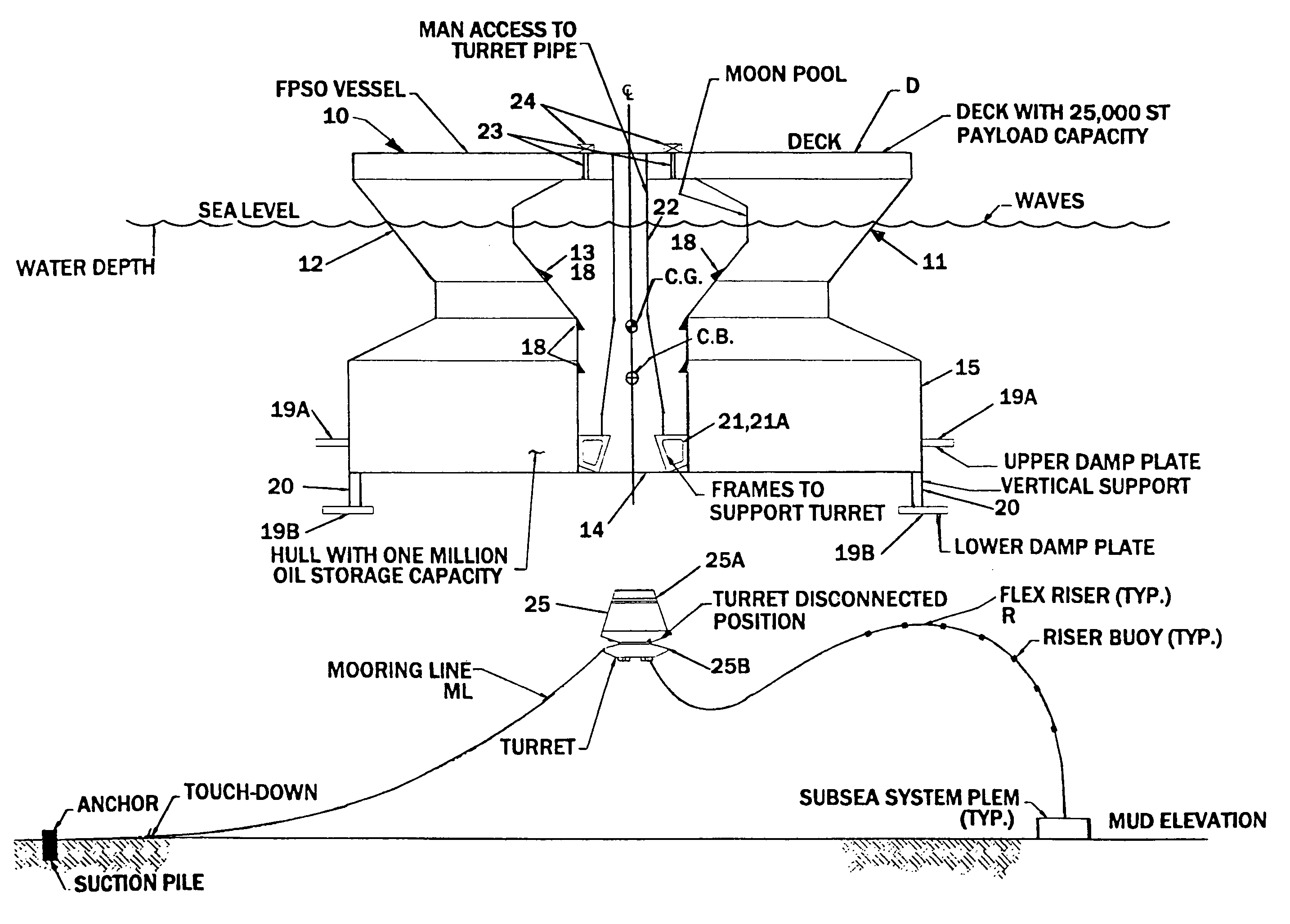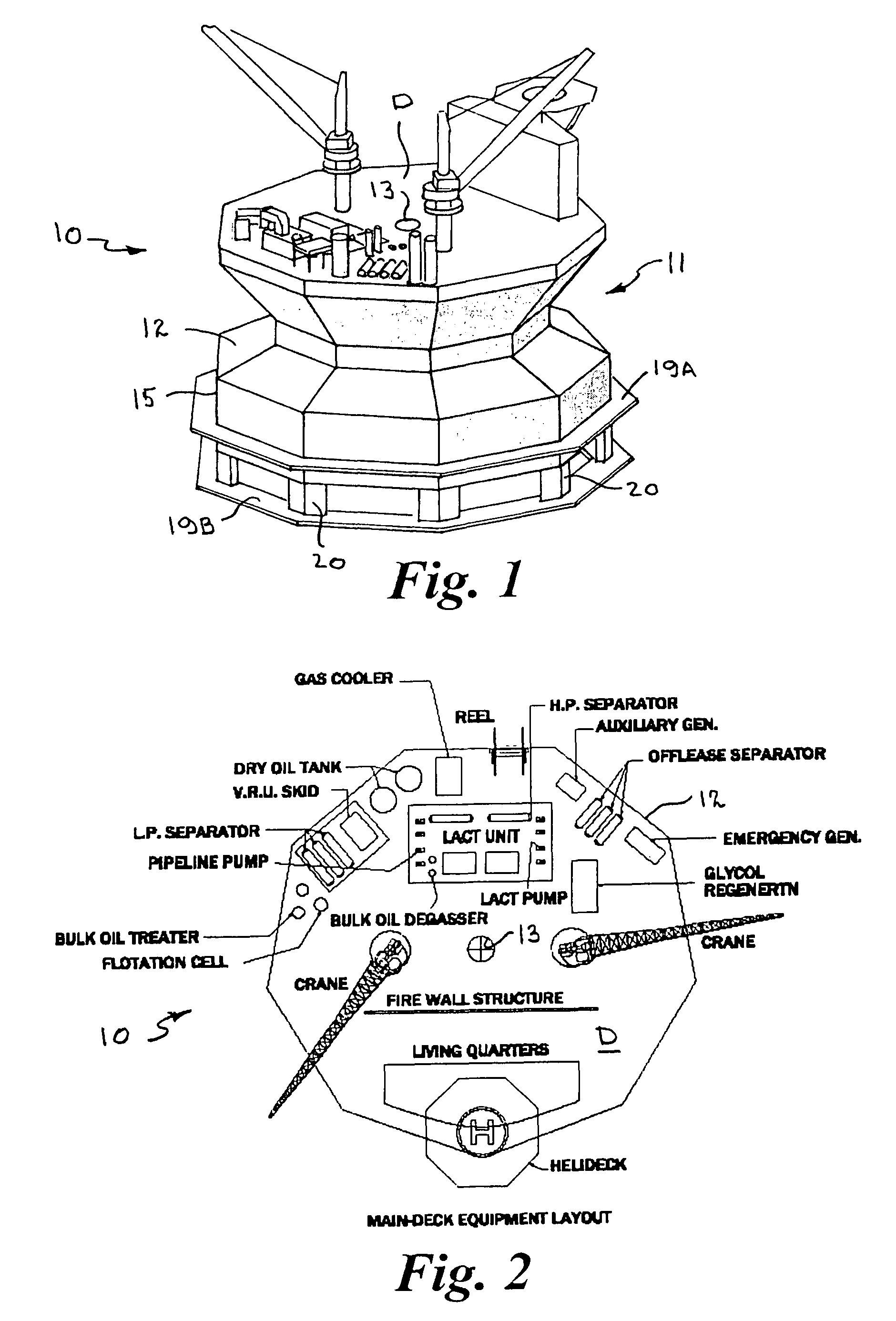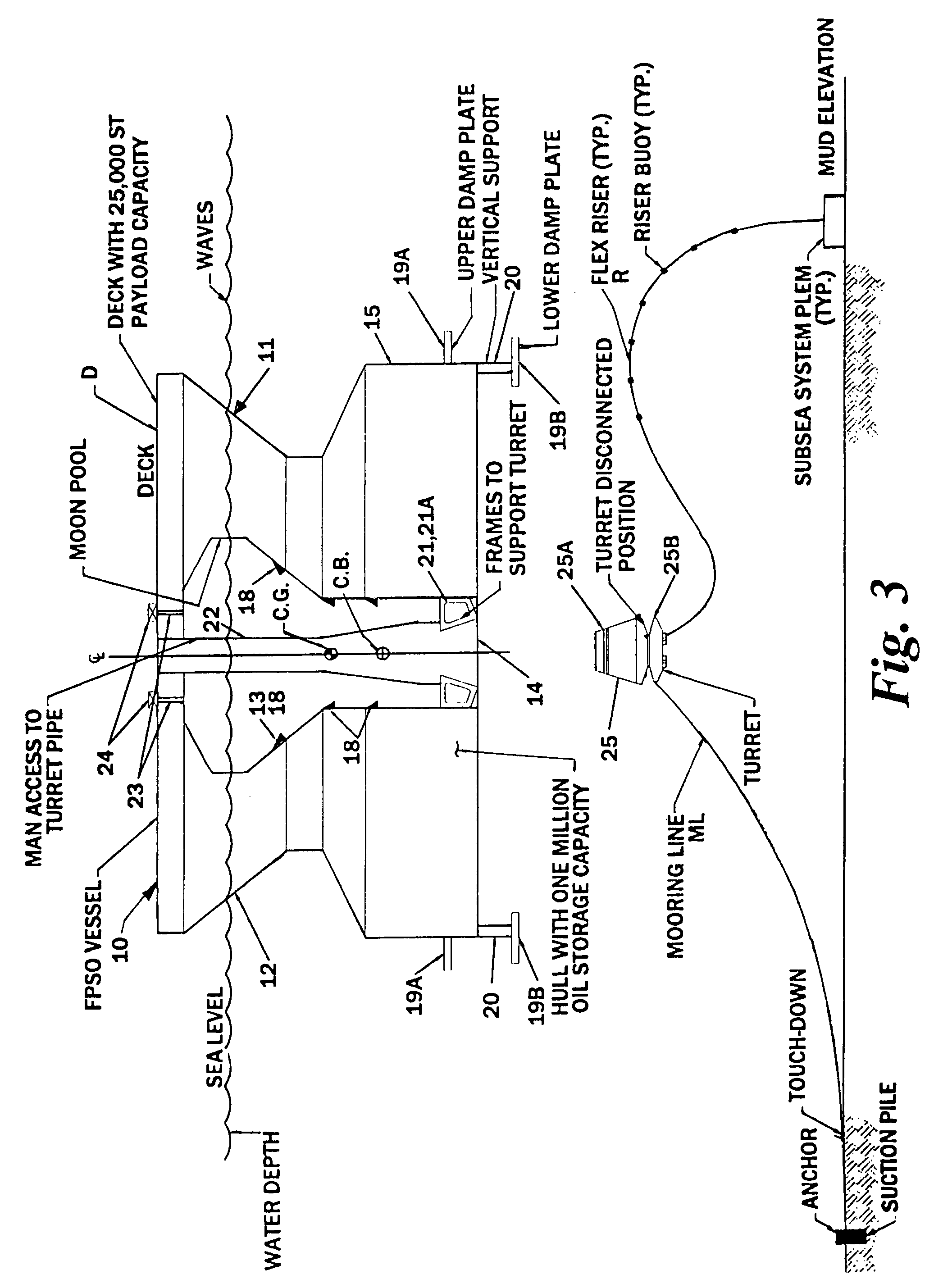Offshore floating production, storage, and off-loading vessel for use in ice-covered and clear water applications
a technology for off-shore floating and clear water, which is applied in the direction of special-purpose vessels, vessel construction, and vessel movement reduction by foils, which can solve the problems of icing of vessels, okhotsk is subject to dangerous conditions, and engineers of semi-submersible vessels face enormous design load challenges, so as to reduce dynamic amplification and resonance, the effect of facilitating vessel maneuvering
- Summary
- Abstract
- Description
- Claims
- Application Information
AI Technical Summary
Benefits of technology
Problems solved by technology
Method used
Image
Examples
Embodiment Construction
[0052]Referring now to the drawings by numeral of reference, there is shown, somewhat schematically, in FIGS. 1 through 8, a preferred embodiment of the offshore floating production, storage, and off-loading vessel 10. The vessel 10 has a monolithic non ship-shaped hull 111 of polygonal configuration formed of steel plate surrounding a central double tapered conical moon pool 13. The exterior side walls 12 of the hull 11 have flat surfaces and sharp corners to cut ice sheets, resist and break ice, and move ice pressure ridges away from the structure, as described hereinafter. The exterior walls 12 may be of double walled construction. In a preferred embodiment, the polygonal hull configuration has an uneven number of sides, such as a nine-sided polygon or “nonagon”. The central moon pool 13 may also be a polygonal double tapered conical configuration with an uneven number of flat sides and corners, or it may be a double tapered conical generally cylindrical configuration with cylind...
PUM
 Login to View More
Login to View More Abstract
Description
Claims
Application Information
 Login to View More
Login to View More - R&D
- Intellectual Property
- Life Sciences
- Materials
- Tech Scout
- Unparalleled Data Quality
- Higher Quality Content
- 60% Fewer Hallucinations
Browse by: Latest US Patents, China's latest patents, Technical Efficacy Thesaurus, Application Domain, Technology Topic, Popular Technical Reports.
© 2025 PatSnap. All rights reserved.Legal|Privacy policy|Modern Slavery Act Transparency Statement|Sitemap|About US| Contact US: help@patsnap.com



